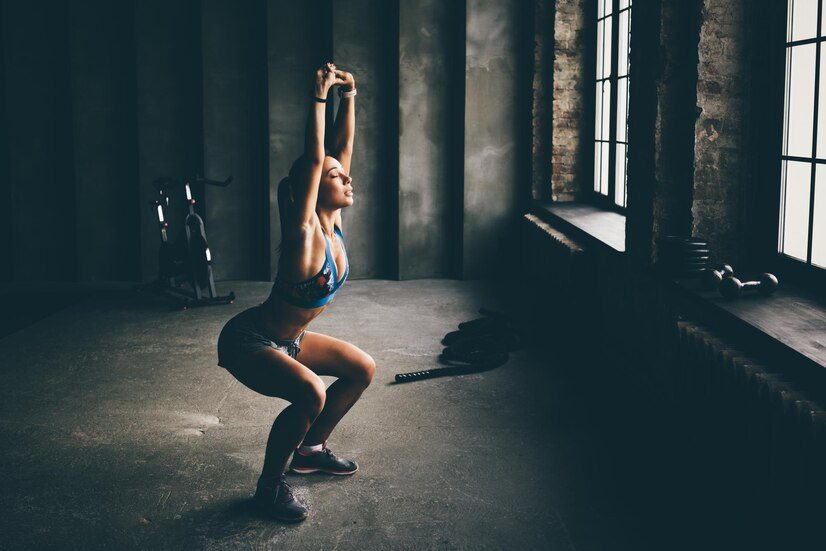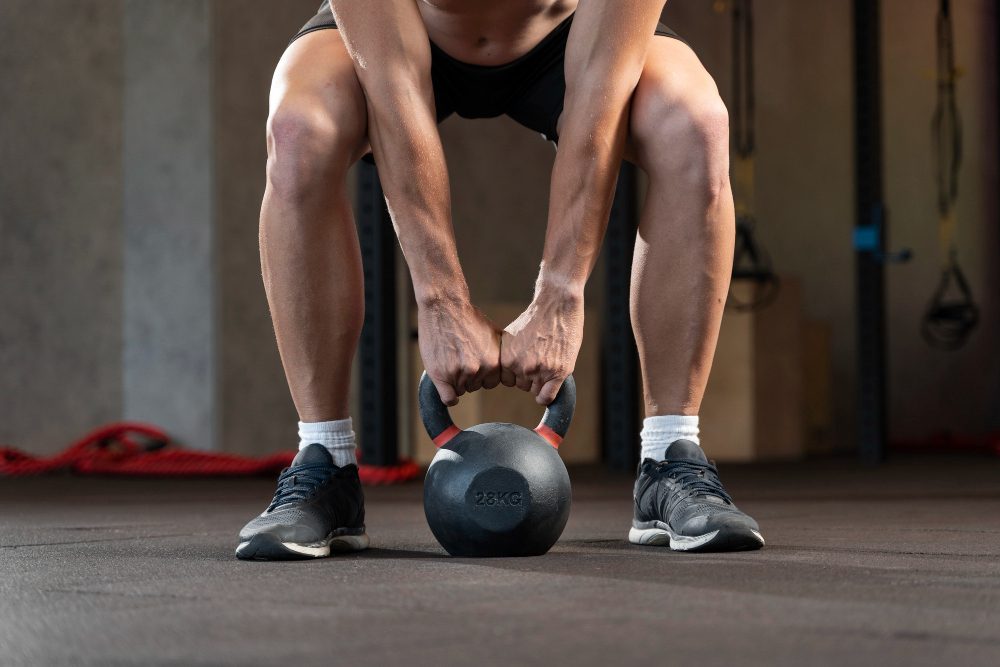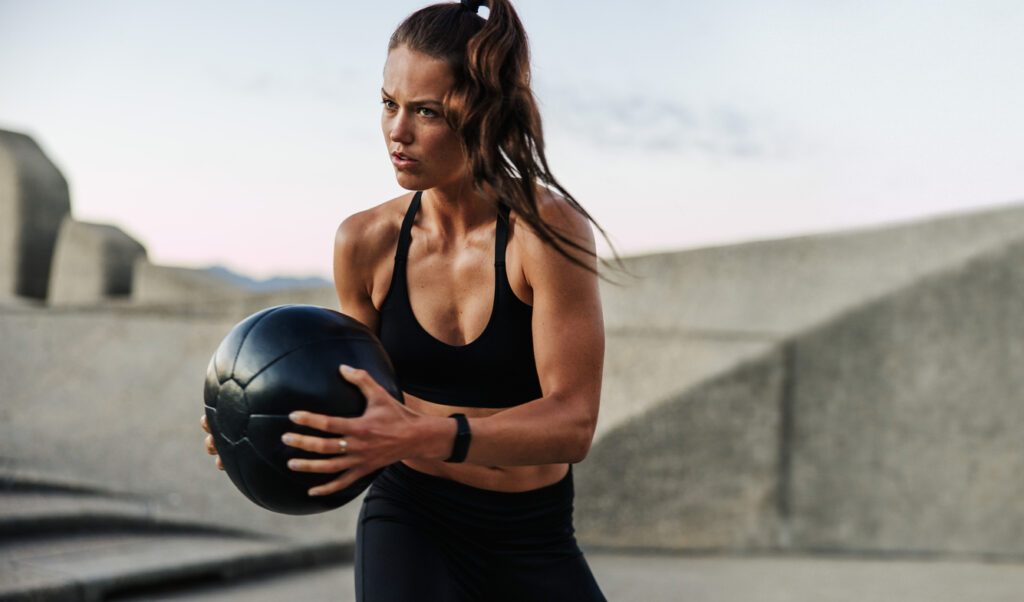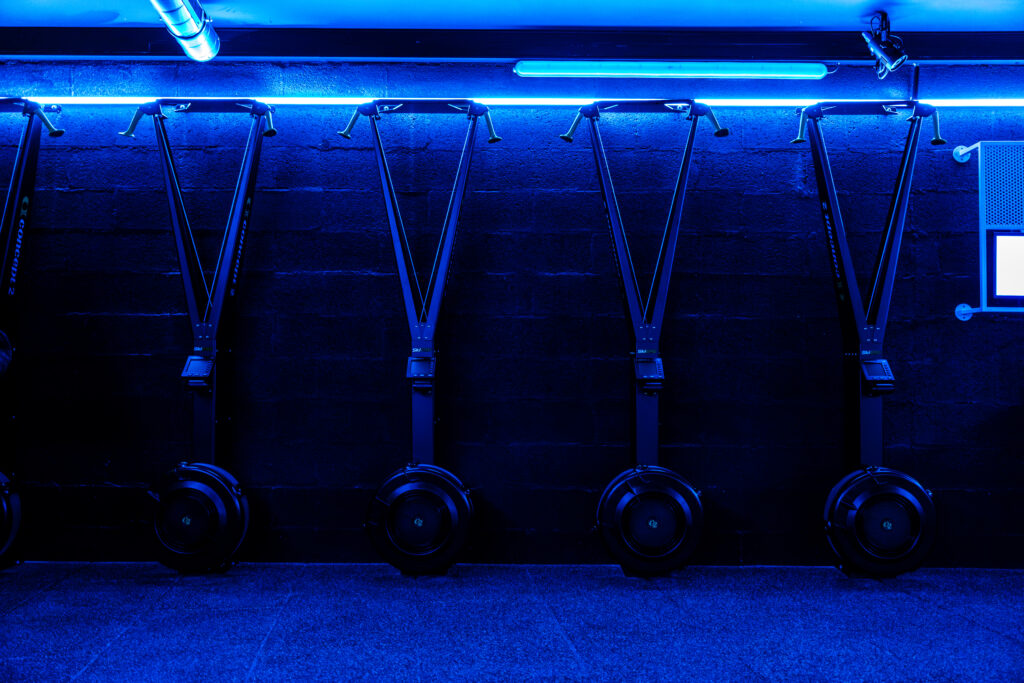
Summary
Welcome / Welcome / Tips for getting started / The best time to exercise: optimise your sessions
The best time to exercise: optimise your sessions
When is the best time to do HIIT? Are you wondering whether you should train in the morning, at midday or in the evening to maximise your results? This comprehensive guide will help you understand the impact of timing on your performance, motivation and recovery.
Introduction to optimal timing for physical activity
Depending on your objectives, your internal clock and your schedule, each time slot offers specific benefits. Weight loss, muscle gain or stress management: it all depends on making the right choice.
The importance of choosing the right time to exercise
The moment you choose to do an activity directly influences your results. Whether you want to improve your endurance, lose weight or increase your muscle mass, timing plays a key role in your progress. Do HIIT in the morning, at midday or in the evening can have different effects on your body, depending on your energy and biological rhythm.
Good timing isn't just about physical performance. It also affects your motivation and your ability to train regularly. If you train at the wrong time, you run the risk of lacking motivation or consistency, which could slow down your progress. The most important thing, therefore, is to understand what time of day you are best able to perform at your best.
Factors influencing the choice of the best time
There are several factors involved in choosing the best time to train. Firstly, there is your biological clock Or circadian rhythmwhich determines the times of day when you have the most energy. Some people perform best in the morning, while others reach their energy peak in the late afternoon.
Then, your personal and professional constraints must be taken into account. You may be limited by your work schedule, family commitments or other activities. The best time is therefore the one that fits perfectly into your daily routine without creating stress or overload.
Morning: an energetic start to the day
Benefits of morning exercise
Start the day with a session of sport in the morning, particularly exercise. HIITcan transform your daily life. The morning is the ideal time to wake up your metabolism and activate fat burning. Training on an empty stomach encourages your body to tap into its energy reserves, which can speed up weight loss and muscle definition.
What's more, exercising early in the day improves your concentration and your productivity. You start off with a clear mind, ready to face the challenges of the day. A HIIT session also releases endorphins, the famous happy hormones, which guarantee a positive mood and sustained energy throughout the day.
Challenges and considerations for morning sport
However, training in the morning is not without its challenges. One of the main obstacles is the need for a longer warm-up time. As your body is still "asleep", it is essential to prepare your muscles and joints properly to avoid injury.
In addition, we need to take into account the feed management. What to eat before and after your session Making HIIT on an empty stomach can be effective, but not everyone tolerates it in the same way. If you prefer to eat before training, opt for a light snack to avoid digestive discomfort and boost your energy.
The lunch break: making the most of your free time
Benefits of exercise in the middle of the day
Taking time out during your lunch break to do some sport, particularly HIIT, can be an excellent way of optimising your day. Exercising in the middle of the day allows you to reduce stress accumulated during the morning, while giving you a boost of energy for the afternoon. After an intense sports session, you feel revitalised and ready to tackle the remaining hours with greater concentration and drive.
What's more, training at this time of day can be a great opportunity to socialisation with colleagues. Taking part in a group session or training in a group can strengthen your social ties and motivate you to keep up with your sessions.
Constraints linked to exercising during the lunch break
Despite its many advantages, there are a few constraints to doing sport at lunchtime. You need to manage your time to maximise your session without taking time away from your other commitments. A HIIT session is ideal because it's short but intense, allowing you to train effectively in as little time as possible.
It is also important to think about hygiene management. If your workplace doesn't have showers or a suitable place to change, you may need to find alternatives, such as refreshing wipes or a change of clothes. Finally, adjust the intensity of your workout so that you're not too tired and stay productive in the afternoon.
In the evening: unwind after a busy day
Benefits of exercise at the end of the day
Exercise in the evening, especially HIITis an excellent way to unzip after a busy day. At this time of day, your body temperature is higher, which optimises your physical performance. You're more flexible, stronger and can train at a higher intensity without needing a long warm-up.
Exercise at the end of the day is also a stress reliever. After building up physical and mental tension, a session of sport allows you to let it all out and end your day on a positive note. The endorphins released during training help to improve your mood and give you a feeling of well-being.
Points of attention for evening sport
However, evening exercise is not without its drawbacks. The main challenge lies in the potential impact on the sleep. If you train too late or at too high an intensity, you risk disturbing your sleep. It is therefore advisable to finish your session at least two hours before going to bed to allow your body to cool down and your mind to calm down.
What's more, the accumulated fatigue during the day can sometimes make it difficult to commit to a HIIT session in the evening. It's essential to listen to your body and adapt to your energy level to avoid overexertion.
HIIT: finding the ideal window of opportunity for maximum efficiency
HIIT specificities in the choice of timing
THE HIIT (High-Intensity Interval Training) is an intense, energy-intensive training method that requires a large amount of energy in a very short space of time. To get the most out of it, choosing the right time of day is essential. Because of the intensity of this exercise, your energy levels need to be at their highest in order to maintain optimum performance and complete each interval efficiently.
As well as intensity, HIIT requires you to manage your body temperature well. recovery. Training at the wrong time can lead to excessive fatigue and complicate recovery, especially if you don't adjust your diet and hydration accordingly. The right timing not only ensures that you perform at your best during the session, but also that you recover well afterwards.
Optimal times for HIIT
HIIT in the morning has a number of benefits, including metabolism boost. If you do a morning session, your body continues to burn calories throughout the day, even at rest. What's more, training on an empty stomach can cause your body to draw on its fat reserves, which is ideal if your aim is weight loss.
On the other hand, practising HIIT at the end of the day allows you to make the most of your time at work. optimal physical performance. With your body fully awake and warmed up after an active day, you can perform at your best during the most intense intervals. It's also an excellent way of releasing accumulated stress while improving your performance.
Adapting the time of practice to your objectives
Weight loss and muscle definition
If your main objective is weightloss or the muscle definitionThe time you choose to exercise can play a key role. Training in the morning, especially on an empty stomach, can speed up the fat burning. In the absence of carbohydrates, your body will draw on its fat reserves to produce the energy needed for the effort. This is a strategy commonly used to maximise weight loss.
As well as timing, it's essential to match your sessions to your diet to get the best results. Morning exercise, combining cardio and strength training, can be particularly effective for sculpt your figure. However, make sure you eat well after the session to recover and avoid any deficiencies.
Muscle mass gain and performance
For those looking to gain muscle mass and improve their performance, the choice of when to train depends on the hormone peaks. This is because the production of testosterone and growth hormones, which are conducive to muscle gain, is generally higher in the late afternoon. This makes the evening a good time for resistance and body-building exercises, optimising muscle mass gain.
Diet also plays a crucial role. Before an evening session, it's advisable to eat a meal rich in proteins and carbohydrates to provide your body with the energy it needs and maximise your performance. A good post-training intake is also essential to stimulate the body's own energy production. muscle recovery and promote growth.
Timing tailored to your profile
Influence of chronotype on the choice of the ideal moment
Your chronotype - i.e. your natural rhythm of sleep and wakefulness - plays a determining role in choosing the best time to train. If you're a "early birdIf you're more the energy type, you'll probably perform better in the morning, when your energy is at its highest. On the other hand, if you're more the "Late-nightersIf you're a busy person, your performance peaks are more likely to be in the late afternoon or evening.
Adapting your training to your chronotype allows you to optimise your sessions, both in terms of intensity and results. You'll feel less tired, have more energy available and feel more motivated in the long term. By listening to your biological clock, you can make the most of each session more effectively.
Taking account of lifestyle and personal constraints
Your way of life and your personal constraints are just as important in choosing the ideal time to exercise. Whether you have family responsibilities, a timetabled job or social commitments, it's essential to find a time that suits your schedule without creating extra stress.
THE shift workers or those with atypical schedules, for example, need to adjust their sessions according to their sleep and rest cycles. If your day starts early or finishes late, you'll probably need to be flexible and adapt your sessions to times when your energy levels are highest, even if this doesn't correspond to conventional training times.
Optimising regularity and motivation
Creating a sustainable routine
To achieve your sporting goals, the regularity is the key. Whatever time you choose to train, the most important thing is to create an atmosphere that is conducive to success. routine that you can maintain over the long term. By setting yourself regular training slots, you turn sport into a habit, which makes it easier to motivate yourself and improve results.
Consistency in timing also helps your body to adapt and respond better to sessions. For example, if you always train in the morning, your metabolism will adjust accordingly, enabling you to manage the effort better and make faster progress. The same applies to evening or midday sessions: what counts is the time you work out. consistency.
Flexibility and adaptability
Although regularity is essential, it is also important to remain flexible. Life is full of unforeseen events, and you may have to postpone or adapt a session. The main thing is not to get discouraged. If you can't train at your usual time, find an alternative, even if it's shorter or less intense.
Listening to your body is just as crucial. If you feel unusually tired or lack energy, it's sometimes better to adjust the intensity of your session rather than pushing yourself too hard. Tailor your workouts to your needs and how you feel, to keep you motivated and avoid overexerting yourself.
Impact of timing on recovery and injuries
Managing fatigue according to practice time
When you choose to train can have a direct impact on the way your body manages fatigue. Training when you're already exhausted, whether early in the morning or late at night, can increase the risk of overexertion and reduce the effectiveness of your recovery. It's therefore crucial to adjust the intensity of your sessions according to your state of fatigue at each moment of the day.
Doing sport at the end of the day, when your body is already stretched by daily activities, may require special attention to avoid injuries related to the accumulated fatigue. If you feel a lack of energy, it's best to moderate the intensity or opt for a lighter session so as not to compromise your recovery.
Injury prevention
THE timing of your training can also influence the risk of injury. In the morning, your body is stiffer after a night's sleep, so you need a longer, more gradual warm-up to avoid muscle strains or muscular pain. In the evening, on the other hand, although your body is more supple, the day's fatigue can impair your concentration and increase the risk of accidents.
To prevent injury, it is important to adapt your warm-up depending on the time of day, and don't neglect the recovery phases. By adjusting the intensity of your sessions according to the time of day, you can reduce the risks and optimise your performance, while ensuring good long-term muscular health.
The role of food in choosing the ideal moment
Synchronise nutrition with training time
Nutrition plays an essential role in sporting performance, and the when you're training determines how you should adjust your meals. If you do sport in the morning, it is often advisable to do so on an empty stomach to stimulate fat burning, but this depends on your personal tolerance. For those who prefer to eat beforehand, a small light snack, rich in carbohydrates and low in fat, can provide an energy boost without weighing down the stomach.
In the afternoon or evening, your meals need to be carefully planned to maximise your performance. A breakfast rich in complex carbohydrates and proteins promotes energy levels and optimises recovery. After training, regardless of the time of day, a meal balanced in proteins and carbohydrates is essential to allow your body to recover and rebuild the muscle fibres it has used.
Nutritional strategies specific to HIIT
THE HIITHIIT, being a very intense workout, requires you to pay particular attention to managing your food intake. Before a HIIT session, it's crucial to have enough carbohydrates in your system to fuel the intense effort. If you do HIIT in the morning, a small pre-workout snack can help keep your energy levels high.
After a HIIT session, the recovery is crucial. This is when your body needs protein to repair muscles and carbohydrates to replenish energy reserves. Synchronising your nutritional intake with your HIIT sessions will not only improve your performance but also help you to manage post-training fatigue better.
Conclusion
The ideal time to do sport depends on your objectives, your chronotype and your schedule. Training in the morning, at midday or in the evening offers unique advantages for improving your performance and maintaining your motivation. Thanks to its intensity, HIIT can be adapted to several time slots to maximise its benefits.
By tailoring your exercise to your needs, you'll optimise your results, whether you're trying to lose weight or gain muscle. Don't forget to adapt your diet too, to support your efforts and your recovery.
Do HIIT with DRIP
Ready for a new challenge? Welcome to DRIP! With our full range of equipment, you can push yourself to the limit with complete confidence.
The DRIP concept is clear: 7 exercises, 3 rounds, 1 minute per movement. Follow one exercise after the other without a break to maximise calorie burn! Thanks to our coaches, motivating playlists and immersive lighting atmosphere, you'll stay on top of your game from start to finish.
Whatever your level, DRIP welcomes you with passion!
Ready to push your limits? Join us in our Paris studios at Monceau or Grands Boulevards. The challenge awaits you, and you're ready to take it on! 💥
Share
Tagged
Read also
follow us
on instagram
To follow all our news,
take advantage of our tutorials and participate
in our many competitions.
BREAKING NEWS!
Receive our newsletter.






